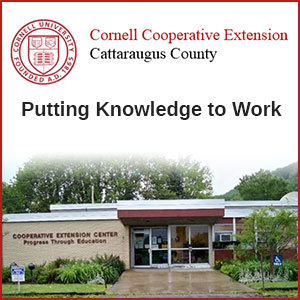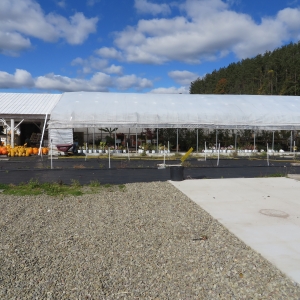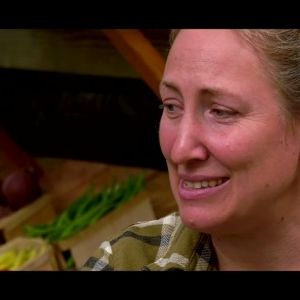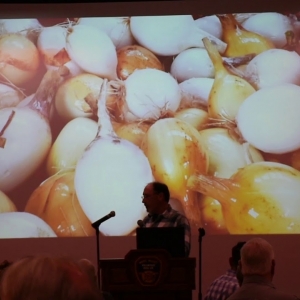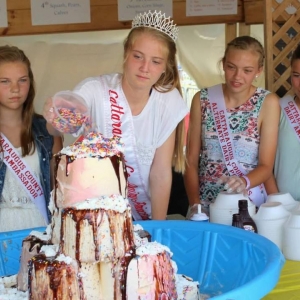Other Ag News:
Farmers and rural businesses are still waiting to find out if they can access one of the United State Department of Agriculture’s (USDA) most popular programs, the Rural Energy for America Program (REAP). This USDA program, which provides federal grants and loan guarantees for farmers and rural small businesses to invest in energy efficiency and renewable energy systems, has endured a funding freeze, delays, and now a potentially fundamental shift in program functions.
On August 19, 2025, US Secretary of Agriculture Brooke Rollins issued a press release outlining a number of changes to the REAP program, as well as to the USDA Rural Development Business and Industry (B&I) Guaranteed Loan Program. Specific to REAP, effective immediately, the memo outlines restrictions to the loan guarantee program and deprioritization in the grant program for ground mounted solar systems larger than 50kW. The memo also includes language that has caused uncertainty about whether grants can be used to purchase solar technologies manufactured outside of the United States. The impacts of these shifting priorities could be substantial, and the USDA has yet to provide any detailed guidance on how they will be implemented.
This latest announcement comes on the heels of a previous stakeholder announcement from June 30, 2025, that delayed the opening of REAP’s first grant application window for Fiscal Year (FY) 2026. Fiscal Year 2026 applications were supposed to be open from July 1 through September 30 but instead were delayed and the new application cycle has not opened. According to USDA, the delay was attributed to the “overwhelming response and continued popularity of the program resulting in a backlog of applicants.” It was then expected that the FY26 application cycle would open on October 1, a timeline likely complicated by the current shutdown. To date, USDA has yet to issue detailed guidance for farmers, rural small businesses, and technical assistance providers concerning how the new priorities outlined by the Secretary for the REAP grant program will be implemented.
This new uncertainty surrounding the program is compounded in light of recent events, when farmers and rural small businesses participating in REAP endured a funding freeze that lasted several months in early 2025. The freeze was the result of an Executive Order issued on January 20, 2025 seeking to shift federal support away from renewable energy. In response, the USDA immediately froze all funding for the REAP program, including for those grants and loan guarantees that were already obligated. It was not until early April 2025 that the USDA finally began to release frozen REAP funding. This long delay led to frustrations and unanticipated expenses for farmers and rural businesses who expected the USDA to honor its commitments.
Program Uncertainty Leading to Mistrust and Delayed Farmer Support
The National Sustainable Agriculture Coalition has been a longtime advocate for the REAP grant program’s ability to support farmers and ranchers in implementing their own projects to help them save money by becoming more energy efficient. The ongoing uncertainty and disruption to these programs have undermined the trust between farmers, rural businesses, and the USDA and threaten the future of this and other programs. During the period of frozen funding, for example, one farmer waiting on their REAP grant indicated they would “think twice about turning to USDA for help any time soon.”
A grant writing firm that does energy audits and prepares REAP applications shared that the current instability of REAP has taken a toll. The sudden changes and unclear guidance has put more than 100 grant applications on hold for this firm, representing over $20,000,000 in projects that have been stalled. NSAC urges USDA to provide more concrete guidance regarding how the new REAP priorities will be implemented and the program timeline. Without thoughtful guidance, USDA risks continuing to undermine this popular program.
According to one REAP grant writing firm, “Many farmers are using decades old grain dryers this harvest because ordering new equipment was dependent upon potential grant funding that never came. Others must now restructure their finances to resubmit applications.”
REAP Is Broadly Popular
The REAP grant program is a well-liked, bipartisan program with a strong focus on smaller farmer-owned projects. Since its inception, REAP has funded more than 19,000 grants totaling more than $1.8 billion in direct support to farmers, ranchers, and rural small businesses to help them improve their energy efficiency and reduce operational costs. 46% of those REAP grants were awarded to agriculture, forestry, fishing, or hunting businesses.
Because of its ability to fit in unutilized spaces, decrease utility bills, and integrate with agricultural activities in agrivoltaic systems, solar is a popular choice for REAP grant applicants. According to the data from Rural Development, 72% of all REAP grant projects are solar. There have been approximately 3,378 REAP grants for solar projects with businesses classed as agriculture, forestry, fishing, or hunting.
Looking at the descriptions provided of past projects, it is clear that, for the most part, USDA has an interest in keeping the grant program functional and that the changes described in the August 19, 2025, memo may have minimal effects on the majority of REAP grants. Only about 152 projects of the 3,378 REAP grants that went to farms and agricultural businesses, maximum, would have been affected by the new limitations because they had ground mounted solar installations of more than 50kW.
Even among the small number of projects that would have been affected by the new rules, it is worthwhile to note that many were still farmer-owned and not on productive farmland. Although the solar projects may be ground mounted and over 50kW, they are not on land competing with agricultural production. Rather, they are in proximity to buildings or infrastructure, such as a Colorado potato farm’s 59kW array next to their potato warehouse and a Michigan farm’s 1.2MW system for their poultry and egg barns. Instead of a blanket deprioritization of ground-mounted projects over 50kW, USDA should consider the incredibly varied operations that apply for the program and support producers with options that work best for their circumstances, including for needs over 50kW.
Confusion Remains Over Implementation of these Changes
Without clarifying guidance, it remains possible that the REAP grant program could lose much of its functionality. In the press release, Secretary Rollins says USDA “will no longer fund taxpayer dollars for solar panels on productive farmland or allow solar panels manufactured by foreign adversaries to be used in USDA projects” and, in supportive quotes, Members of Congress refer to “foreign-made solar panels.” The Department of Energy estimates that 85% of the solar modules installed in the US are imported, the majority from China. If guidance is implemented immediately in the next grant application cycle that limits imported solar materials, there are significant concerns that REAP will be impacted. With China responsible for a majority of the global solar market, domestic sourcing requirements could dramatically increase project costs, potentially pricing out the small farmers that REAP is supposed to serve.
Right now, producers are facing some of the toughest economic conditions in decades, and they need USDA programs like REAP that help diversify revenue and reduce costs to remain functional, reliable, and available. In the long run, investing in domestic solar manufacturing would benefit farmers and the US energy sector alike, but until such capacity is in place, restrictions risk cutting off affordable, proven technologies that farmers rely on. The press release also justified these revisions as a means of preventing solar development from displacing productive farmland. However, REAP grant data indicate that only a very small share of projects involved ground-mounted systems larger than 50kW, and among those, most were not located on high-value cropland. Farmers, especially those running small and midsized operations, cannot afford to lose access to cost-saving technologies at a time of historic economic pressure. If USDA wants REAP to remain functional, revisions must be carefully tailored to support domestic innovation without undermining farmer access.
The post REAP Must Remain Functional and Accessible to Farmers appeared first on National Sustainable Agriculture Coalition.
Editor’s Note: This blog post is a guest post authored by the National Farm to School Network, which is an NSAC member.
The Patrick Leahy Farm to School Grant Program has had an incredible reach, providing $100 million in awards to 1,275 projects since 2013. On September 10, the United States Department of Agriculture (USDA) announced it was opening applications for the FY 2026 Patrick Leahy Farm to School Grant Program. National Farm to School Network applauds USDA for this new launch, especially after two key farm to school programs were canceled in March: the Patrick Leahy Farm to School Grant Program and the $660 million Local Food for Schools and Child Care (LFSCC) program. LFSCC, which directly funded food purchases from local farmers, has not returned. The Patrick Leahy Program supports farm to school efforts broadly but offers little funding for local ingredients.
We would like to thank all the legislators who expressed concern and asked questions to USDA Secretary Rollins through a joint letter and through multiple hearings. We also want to thank our local and state partners who shared their stories about the impact of the recent cut and advocated for its continuation.
We are also incredibly grateful to USDA for making farm to school a priority, which was featured in the agency’s recent Small Family Farms Policy Agenda. We urge USDA to continue to find ways to bolster local procurement, school gardens, and agriculture education. Farm to school is truly a triple win for our nation’s farmers, kids, and communities.
The Good News:There’s ample time to submit gather and submit an application
Farm to school champions have just under three months – until December 5th – to submit applications.
There’s up to $18 million on the table
USDA has shared it will award up to $18 million, subject to availability of funds. While this amount is less than what we hoped given the cancellation of the $10 million fiscal year (FY) 2025 cycle, if fully awarded, this would be the largest annual round of awards since the program began in 2013!
USDA is providing more technical assistance that ever
This technical assistance takes the form of a webinar and several office hours:
*Edit: The government shutdown on October 1 will likely affect USDA’s office hours—it is unclear whether they will be postponed or cancelled.
- Webinar: October 1, 2-3pm ET [register here] *cancelled due to the Oct 1 government shutdown. Please stay tuned for updates.
- Office Hours: All sessions will be held from 2:00-3:00 PM Eastern Time on:
· October 8, 2025 (Click Here to Join)
· October 21, 2025 (Click Here to Join)
· November 5, 2025 (Click Here to Join)
· November 18, 2025 (Click Here to Join)
· December 2, 2025 (Click Here to Join)
Partnerships are now required (with some exceptions)
While project partnerships were common in previous award cycles, the FY 2026 RFA now requires applicants other than State agencies and Indian Tribal Organizations (ITOs) to apply as a partnership. A partnership is a group of three or more entities, including a coordinating entity, that will participate in the proposed grant project. All projects must include at least one child nutrition program (CNP) as a partner.
We’re glad to see USDA affirm that strong partnerships are the foundation of successful farm to school programs. However, the new mandatory CNP partner regulation may cause some hardship for some. Projects not specific to CNPs, such as research or solving broader problems, will now have to shift. For example, work that focuses on food supply chain innovations or providing training to farmers may be constrained. In addition to producers, the CNP partnership requirement may also present difficulties for early childcare sites that do not participate in the Child and Adult Care Food Program (CACFP) due to burdensome paperwork or regulations. If these sites want to submit a proposal, they will need to adjust their project ideas to include an official CNP partner and then secure one, even though they already feed children every day. That feels like a tall ask for two groups that are already stretched thin.
Finding partners and ensuring proposals meet these guidelines may require extra time and intentionality. Please refer to NFSN’s state partner map or connect with your own state’s farm to school network if you need assistance finding project partners.
Projects must be at least $100,000
Increasing the project proposal floor to $100,000 marks a truly dramatic change. Since 2013, 97% of previous grant awards representing 88% of funding have been for under $100,000. Before this, there was no project request floor and the award cap was increased from $100,000 to $500,000 just in 2022 for multi-state or multi-Tribal projects. The award cap for the Turnkey Grant track, which spanned 2021-2024, was even smaller, at $50,000.
The Match: Providing a 25% match has always been a barrier to participation. As the cost of a project increases, so does the match. Page 15 of the RFA explains the formula: If the federal grant request is $100,000 (the new minimum), this means applicants will have to provide a match amount of $33,334, bringing the total project cost to $133,334.
While creating high-award and high-impact grant projects makes sense to streamline operations at USDA, it is likely that many small-scale projects and smaller-size applicants will be excluded from this grant opportunity. Many rural schools may not want to request $100,000 for a project, even if they could afford the match. Additionally, there are less than ten states that have established and funded similar competitive farm to school grant programs at the state-level. This will leave a large gap for funds to seed farm to school programs, especially for the Southeast, Mountain Plains, Southwest, and Midwest regions.
Therefore, applicants must be more intentional about project partners for their applications this cycle. Multiple small projects can team up to form larger cohesive proposals, and applicants with greater capacity can reflect on how they are able to step up for grassroots partners through regranting or partnership.
Equity scoring criteria is removed
The FY 2025 cycle was canceled because the grant’s scoring criteria added bonus points related to equity. Therefore, it’s no surprise that this was removed from the FY 2026 cycle.
Specifically, the previous RFA added up to seven bonus points for racial equity priorities, including tribal organizations, and organizations led or staffed by people of color and serving communities of color. This scoring boost wasn’t limited to racial equity. Up to three bonus points went toward small-to mid-size producers and producer groups, child nutrition programs in rural areas, and projects that serve high proportions (40%+) of students that are eligible for free and reduced breakfast.
While NFSN recognizes that diversity, equity, and inclusion measures are explicitly not part of the Trump Administration, these bonus points helped level the playing field for many different kinds of communities that have historically faced discrimination.
Removal of grant tracks
Previous cycles included multiple grant tracks: State Agency, Implementation, and Turnkey (further subdivided into Agriculture Education, Edible Garden, and Planning tracks). This RFA removes all grant tracks.
While this ‘streamlining’ may have some benefits such as giving more freedom to applicants, it also may come with some unintended consequences. With multiple tracks, it is easier for grantors to earmark certain funds for specific purposes or groups to ensure fair or strategic distribution. The Turnkey track (which allowed awards of up to $50,000) was also designed to be more plug-and-play for applicants new to farm to school or looking to engage in small projects. The elimination of the Turnkey grant track and the increased award minimum will make it harder for these applicants to apply.
To Wrap It Up:National Farm to School Network is thrilled at the launch of the FY 2026 Patrick Leahy Farm to School Grant Cycle. This funding is critical to support the growth of farm to school programs across the country. With three months to develop proposals and additional technical assistance from USDA staff, we are looking forward to seeing how the up to $18 million will get awarded.
The key changes this round include: (1) requirement for partnerships for non-state agency and Indian Tribal Organization applicants, (2) new request minimum of $100,000, and (3) removal of equity bonus point scoring criteria, (4) removal of grant tracks.
The new FY 2026 structure has the potential to support large-scale, ambitious projects that can transform farm to school. However, it also risks leaving out smaller initiatives that have long been the backbone of this movement. Ensuring project proposals meet the new partnership requirements and navigating partnerships thoughtfully and equitably will be key to ensuring that all communities have a chance to benefit from this funding.
Our organization has created a dashboard with visualizations and descriptions of the 1,275 grant projects awarded thus far – $100M since 2013! While there are significant changes in this grant cycle, our dashboard can help you learn more about successful projects and find out who was awarded in your area.
Collaborate with NFSN On Your Project:NFSN is excited to work with our partners on joint proposals, ranging from a main partner to a small consulting role. If you are interested in teaming up with NFSN for a project, please email one of our staff members or email info@farmtoschool.org.
The post Guest Blog Post: The Patrick Leahy Farm to School Grant FY 2026 Cycle is Open! appeared first on National Sustainable Agriculture Coalition.
On September 22, 2025, the National Sustainable Agriculture Coalition (NSAC) submitted comments opposing the Environmental Protection Agency (EPA)’s proposal to rescind the 2009 Endangerment Finding – one of the United States’ most critical tools in the fight against climate change. The Endangerment Finding established the scientific and legal basis requiring Clean Air Act regulation of greenhouse gas emissions to protect public health and welfare, and it underpins most US climate rules. Depending on EPA’s final approach, the rescission could impact regulations far beyond motor vehicle emissions.
The EPA proposal ignores decades of comprehensive, peer-reviewed science and relies almost exclusively on a draft report from the Department of Energy’s ‘Climate Working Group’, a since-disbanded group of five climate skeptics who do not represent scientific consensus. In their chapter on agriculture, the report’s authors go so far as to claim that “there is reason to conclude that on balance climate change has been and will continue to be neutral or beneficial for most US agriculture.”
The reality of farming in the United States tells a different story. Climate change is already disrupting agricultural production across most major crops and regions.
Due to climate change and depending on the region, farmers and farmworkers nationwide face:
- Unprecedented heat and drought that have led to crop and livestock stresses, yield losses, and depleted surface and groundwater resources;
- More intense weather and changing precipitation patterns, heavy rains, hurricane winds, and floods, as well as increasing pest pressures;
- Decrease in quality and availability of forage; and
- Rising hospitalizations and fatalities from heat and more airborne pollution (including wildfire smoke). These hazards disproportionately affect the 3 million farmworkers who do two-thirds of the labor to put food on American tables.
The EPA’s rationale contradicts both established science and farmers’ on-the-ground reality. As NSAC details further in its comment – joining tens of thousands of others highlighting the proposal’s departure from evidence – the Endangerment Finding should remain in place and the rescission proposal should be withdrawn.
Read NSAC’s full comment here.
The post NSAC Counters DOE Claim: Climate Change is Harming, Not Helping, US Agriculture appeared first on National Sustainable Agriculture Coalition.
FOR IMMEDIATE RELEASE
Contact: Laura Zaks
National Sustainable Agriculture Coalition
press@sustainableagriculture.net
Tel. 347.563.6408
Release: NSAC Presses for More Details, Better Process on USDA ReorganizationWashington, DC, October 1, 2025 – Yesterday, the National Sustainable Agriculture Coalition (NSAC) submitted a comment outlining concerns with the proposed US Department of Agriculture (USDA) reorganization plan detailed in Secretary Memorandum 1078-015.
In its comments, NSAC emphasized that while it supports USDA’s stated goals of enhancing effectiveness, accountability, and service delivery, the current proposal was made without input from farmers, lacks sufficient detail, and risks undermining core functions of the agency. NSAC warned that the plan could destabilize agricultural research, conservation programs, technical assistance, and access to critical components of the farm safety net.
“Our members, more than 170 grassroots organizations representing family farmers, ranchers, and rural communities, are deeply concerned that this reorganization could worsen the challenges many producers are already facing,” said Mike Lavender, NSAC Policy Director, adding: “We urge USDA to revise its approach and engage meaningfully with stakeholders to ensure reforms strengthen, rather than weaken, the Department’s ability to serve our nation’s farmers, ranchers, and the broader public.”
The letter was submitted electronically to reorganization@usda.gov as part of the public comment process, which closed yesterday.
Read NSAC’s full comment here.
###
About the National Sustainable Agriculture Coalition (NSAC):
The National Sustainable Agriculture Coalition is a grassroots alliance that advocates for federal policy reform supporting the long-term social, economic, and environmental sustainability of agriculture, natural resources, and rural communities. Learn more: https://sustainableagriculture.net/
The post Release: NSAC Presses for More Details, Better Process on USDA Reorganization appeared first on National Sustainable Agriculture Coalition.
Washington, DC, October 1, 2025 – Today, the National Sustainable Agriculture Coalition (NSAC) issued the following comment in response to the government shutdown after Congress failed to reach a funding agreement, attributable to Mike Lavender, NSAC Policy Director.
“In a challenging moment for farmers and the farm economy, the government shutdown will further destabilize – and in some cases stop – federal services that offer critical loans, disaster assistance, conservation funding, and more. The shutdown also threatens food safety, leaving states on the hook to fund food safety inspections once their cooperative agreements expire. With nearly half of all US Department of Agriculture (USDA) staff furloughed, farmers can expect limited services and delayed payments. These disruptions will worsen with time and be exacerbated if the Administration implements a ‘reduction-in-force’ plan to fire more USDA employees. NSAC encourages Congress and the President to set-aside finger pointing and work toward an agreement that brings stability to farmers and the communities they call home.”
###
About the National Sustainable Agriculture Coalition (NSAC):
The National Sustainable Agriculture Coalition is a grassroots alliance that advocates for federal policy reform supporting the long-term social, economic, and environmental sustainability of agriculture, natural resources, and rural communities. Learn more: https://sustainableagriculture.net/
The post Comment: NSAC Laments Government Shutdown as It Harms Farmers, Halts Progress appeared first on National Sustainable Agriculture Coalition.
On July 24, 2025, US Secretary of Agriculture Brooke Rollins released memorandum SM-1078-015 announcing a proposed reorganization of the US Department of Agriculture (USDA). The proposal was drafted without consultation with farmers or other key stakeholders. Since the beginning of 2025, the agency has already lost more than 20,000 employees, and if implemented, the restructuring could trigger thousands more departures.
In response to a public outcry, USDA opened an ad hoc opportunity for feedback on the proposal. NSAC is encouraging farmers, advocates, and organizations to submit their perspectives on the proposed reorganization to reorganization@usda.gov by September 30, 2025. Still, NSAC remains seriously concerned that USDA has bypassed the standard practice of issuing a Federal Register notice to formally solicit public input on a change of this scale.
This post is the fourth installment in our series examining USDA’s staffing crisis and the ripple effects of the proposed reorganization. Here, we highlight staffing declines within the Farm Service Agency (FSA), where staff reductions threaten to undermine the agency’s ability to administer farm safety net programs, deliver disaster assistance, and provide critical support to farmers across the country. Our earlier posts looked first at overall USDA and state-level staff losses, the implications for the Department’s research agencies, and the loss of staff at the Natural Resources Conservation Service.
FSA Staff Numbers Have Fallen for Two DecadesThe Farm Service Agency (FSA) administers loans and payments to farmers and landowners, operating through a network of more than 2,000 state and county offices. FSA staff help farmers apply for loans, price support programs, income support, disaster recovery, and a variety of other financial support programs. FSA, quite literally, keeps the money flowing for millions of American farms and ranches.
FSA employees include national, state, and county office staff. About ⅔ of FSA employees are county staff, working directly with farmers and landowners in local offices spread across the country. In 2024, for instance, approximately 7,168 employees were FSA county staff and approximately 3,402 were FSA state or national employees.
Figure 1: FSA Staff in FY2024
*While FSA state and national staff are “typical” federal employees, FSA county staff are technically employees of county or community committees and are not considered federal general service employees by the Office of Personnel Management (OPM). Therefore, there is unfortunately much less information available concerning FSA county staff than concerning FSA state and federal staff.FSA staffing levels have steadily eroded over recent decades. Even before the staff losses sustained during the current administration, the number of federal and state FSA staff declined by 43% between fiscal year 2005 and the beginning of fiscal year 2025. The number of county FSA staff declined by 22% during the same twenty year period. The National Association of Farmer Elected Committees recently sounded the alarm that there are now fewer than 6,000 FSA county office employees nationally, a 34% reduction from 2005 staffing levels.
Figure 2: FSA Staff by Fiscal Year
*FSA state and federal staff numbers come from the Office of Personnel Management; FSA county numbers come from USDA annual budget explanations Accelerated FSA Staffing LossesThe FSA has lost at least 1,200 additional employees just since January 2025. Approximately 499 FSA national and state employees and 674 FSA county employees opted to accept the Deferred Resignation Program (DRP). The DRP encouraged federal employees to resign from their positions in exchange for receiving full pay and benefits through September 2025. Approximately 88 additional FSA state and national employees separated from the agency between January and March 2025, according to OPM. Unfortunately, since FSA county employees are not tracked by OPM, it is unknown how many FSA county employees also separated from the agency during this new administration.
Table 1: Recent FSA Staffing Losses
*FSA state and federal staff numbers come from the Office of Personnel Management; FSA county numbers come from USDA annual budget explanationsAltogether, the FSA is entering the 2025 harvest season with at least 12% fewer staff members than in January 2025 and at least 1,100 employees fewer than at the end of the first Trump Administration. Just as farmers and landowners enter a period projected to be extremely economically challenging, the agency that provides their federal financial support has been gutted. The FSA has struggled to administer payments to farmers under the Supplemental Disaster Relief Program of 2025 and the 2023/2025 disaster relief programs, and is navigating the extensive changes to the federal commodity payment programs that were part of the recently passed budget reconciliation process. In addition, there is a growing recognition that supplemental relief will be needed for producers impacted by tariffs, high input costs, and program cuts. The scale of such assistance, likely to be around $20-30 billion, will require significant FSA support to ensure any program is run effectively and payments reach all producers in need. At a time of extremely high demand, these staffing levels will cause distress for the agency and stakeholders.
Every State Hit With FSA Staff LossesSince two-thirds of FSA employees are county staff, the impact of the DRP and staff separations has been felt in every state across the country. Amongst the FSA federal employees, states lost an average of 17% of their FSA staff to the DRP. Two states, Alaska and Delaware, lost the only federal FSA employees in their state to the DRP. The 674 county FSA employees who left their positions to the DRP were spread across 46 states, with Texas (59 employees), Iowa (37 employees), Georgia (36 employees), and Kansas (33 employees) losing the large number of FSA county staff. The map below shows the number of FSA staff lost in each state since January 2025, including both the staff who accepted the DRP and those who otherwise separated from the agency.
Figure 3: FSA Staff Lost to DRP and Separations
!function(){"use strict";window.addEventListener("message",function(a){if(void 0!==a.data["datawrapper-height"]){var e=document.querySelectorAll("iframe");for(var t in a.data["datawrapper-height"])for(var r,i=0;r=e[i];i++)if(r.contentWindow===a.source){var d=a.data["datawrapper-height"][t]+"px";r.style.height=d}}})}();No state has been spared in the gutting of the FSA staff.
Farming Stakeholders Express Their Distress With Staff CutsRecently, The National Association of Farmer Elected Committees (NAFEC) issued a statement expressing their distress and frustration with existing low FSA staffing levels. NAFEC President Jim Zumbrink said: “NAFEC has County Committee members in every county in the nation and the word we are consistently hearing is our county office staffs are critically understaffed…As such, our staff will find it very difficult to perform the complex work of the new Farm Bill, combined with Disaster programs and ongoing programs, with the speed agriculture producers in America, both expect and desperately need.”
Leaders at NAFEC shared that their local offices will be unable to administer existing safety net programs and the forthcoming changes from budget reconciliation and a potential new farm bill. “The new farm bill is going to require millions of new base acres to be established which is going to take a lot of work. We also know that ongoing programs like the Livestock Forage Program (LFP), critical to our nation’s livestock producers, is a program that takes a lot of staff time to administer,” said Kevin Dale, a retired county executive director from a large beef-producing county in Oklahoma. His Oklahoma county office staff has recently been cut from a staff of four full time employees (including one full-time temporary employee) to just two staff members. With those numbers, he says, “Issuing payments quickly under this program will be impossible, without additional staffing.”
FSA staff are highly skilled with extensive institutional knowledge that is lost with these separations. For instance, staff who separated from the agency between January and March 2025 had an average of 18.6 years of service, according to OPM. The decades worth of invaluable experience and institutional knowledge FSA staff carry is essential to serving stakeholders effectively and efficiently. Bob Braden, a NAFEC officer and corn and soybean grower from Iowa says: “With the recent buyouts, not only are FSA offices depleted of warm bodies, but a tremendous amount of knowledge and experience also walked out the door of our offices. Replacing this experience will take a good amount of time.”
NAFEC’s recent public outcry concerning FSA staffing levels follows a July 2025 letter to farm groups highlighting that FSA staffing levels were “already at a breaking point:” “With recent buyouts and early retirements, the staffing levels in our counties has never been lower. Already at a breaking point, we are now faced with having to develop base acres on over 36 million new acres, as well as maintain all of the Title 1 programs that ensure a strong farm safety net. Frankly, we need your help if we are to be able to deliver the farm programs in the fast and efficient manner our producers have come to expect and deserve.”
FSA Staff at a Breaking PointThe steady erosion of FSA staff, combined with the recent surge in losses, has left farmers and landowners with fewer resources and slower access to critical support just at the moment they most desperately need it. Rather than addressing this crisis, the Presidential budget includes massive cuts of more than $372 million to the FSA budget for the next fiscal year and plans to close many local offices. Deputy Secretary Vaden has said there are no plans to ask for either temporary or permanent increases in FSA staff levels, despite widespread stakeholder concerns.
The proposed USDA reorganization will only further exacerbate this staffing crisis by driving even more staff out of the agency. Without a clear plan to rebuild FSA’s workforce, particularly at the county level where farmers most directly depend on assistance, USDA risks undermining the very programs that sustain farm communities in times of need.
The post USDA Staffing Crisis: Farm Service Agency Staff Losses Put Farm Safety Net at Risk appeared first on National Sustainable Agriculture Coalition.
(Washington, D.C., September 30, 2025) – U.S. Secretary of Agriculture Brooke L. Rollins announced the U.S. Department of Agriculture (USDA) will provide more than $38.3 million in Congressionally mandated recovery assistance to South Carolina agricultural producers through a block grant agreement with the South Carolina Department of Agriculture (SCDA) to help producers recover from Hurricane Helene.
(Washington, D.C., September 30, 2025) – U.S. Secretary of Agriculture Brooke L. Rollins announced the U.S. Department of Agriculture (USDA) will provide more than $531 million in Congressionally mandated recovery assistance to Georgia agricultural producers through a block grant agreement with the Georgia Department of Agriculture (GDA) to help producers recover from Hurricane Helene.
(Kansas City, MO, September 25, 2025) – Today, in Kansas City at the Agriculture Outlook Forum, U.S. Secretary of Agriculture Brooke L. Rollins spoke on the current state of the farm economy in the United States and addressed the ways President Trump is supporting American agriculture. U.S. farm production inputs are significantly more costly than four years ago, putting pressure on farmers’ bottom line.
Small and mid-sized meat and poultry processors play a critical role in supporting resilient regional food systems by providing livestock farmers with a wider range of processing options and by providing more local and regional animal products for consumers. On April 30, 2025 a bipartisan group led by Senator John Thune (R-SD), Senator Tina Smith (D-MN), Representative Chellie Pingree (D-ME), and Representative Jim Baird (R-IN) reintroduced the Strengthening Local Processing Act (SLPA) in both chambers of Congress to help grow this sector. SLPA provides much needed support for small and mid-sized meat processors by providing grants, technical assistance, and workforce support to expand capacity, improve food safety, and strengthen regional food systems.
One of the ways that SLPA supports the development of small and very small meat processors – defined by the US Department of Agriculture (USDA) as having fewer than ten or 10-500 full time equivalent employees, respectively, is by incentivizing maintenance and uptake at the state level of an already-established program: the Cooperative Interstate Shipping program (CIS). CIS allows states with their own meat and poultry inspection programs to allow state-inspected meat to ship across state borders and even internationally, helping farmers and regional processors expand their markets.. This simplifies market access by eliminating the need for additional federal inspection of plants in participating states.
More than a decade after its creation, only a handful of states and processors have successfully joined CIS. SLPA would help promote the expansion of CIS by:
- Requiring the Food Safety and Inspection Service (FSIS) to conduct outreach to states with state inspection programs that are not part of the CIS program, and to submit a report to the House and Senate Agriculture Committees each year detailing the activities and the results of the outreach conducted.
- Increasing the share of total program costs that the USDA will cover from 60% to 80%.
- Increasing the size of plants that are eligible to participate from plants with fewer than 25 employees to plants with fewer than 50 employees.
Together with the other aspects of the SLPA, the expansion of CIS builds more regional markets for farmers and consumers.
This blog post examines the most recent data on CIS participation, reveals just how underutilized the program currently is, and why Congressional action through the Strengthening Local Processing Act (SLPA) is needed to fulfill the full potential of the CIS.
A Well-Intentioned Program, Largely Sitting on the Shelf, UnderfundedThe CIS program was created by Congress in 2008 to give small meat and poultry processors more market access without requiring them to obtain USDA inspection. Instead, plants operating under a state inspection system can ship across state lines if their state opts into the program and the plant is certified by FSIS.
Despite the flexibility it offers, participation in CIS remains limited, in part because FSIS does not currently promote the program. Just 163 plants nationwide are participating in the program and only 9 of the 29 eligible states (31%) currently have any plants enrolled in CIS.
Data from FSISOver the last several years, during the annual government funding cycle, both agencies, the President, and Congress have noted the need to increase funding for this program to prevent insolvency and strengthen the relationship between the federal government and states. In the FY24 and FY25 appropriation processes, Congress included report language that stated the importance of this program.
Recently, USDA took some small steps to ensure the continued solvency of the program for several states, utilizing the Non-Recurring Expense Fund to help many states reach the mandatory 50% cost share.
The Economic Potential: Thousands of Jobs, Millions in PayrollYet, with support from the SLPA, there is massive potential for CIS. Nationally, there are 2,133 plants with fewer than twenty employees and 2,614 plants with fewer than 50 employees, according to the 2022 County Business Patterns data from the US Census Bureau. With the larger plant size cap and the mandated outreach of the SLPA, the number of CIS plants nationally has the potential to grow more than sixteen times its current scope.
Data from FSIS and US Census BureauEven among the twenty nine states currently eligible for CIS, the enrollment of plants is low and would benefit from all the additional support the SLPA offers: increased cost share, and promotion of the CIS program. Currently, among plants with fewer than 20 employees in those eligible states, only 12% participate in CIS. This limited participation is not due to a lack of need—but to administrative and structural barriers.
Small and mid-sized processors are vital to regional food security and rural economies, and support from the SLPA could help amplify their impact on rural communities. According to 2022 US Census Bureau County Business Patterns data:
- Processors with fewer than 20 employees account for 2,133 facilities, employing more than 13,500 workers, and generating $564 million in annual payroll.
- Processors with fewer than 50 employees account for 2,614 facilities, supporting more than 28,634 jobs, and generating over $1.34 billion in annual payroll.
If CIS participation were expanded, these small plants could grow their customer base across state lines, invest more in operations, and potentially create new jobs in rural communities.
Potential for Administrative Simplification and Cost CuttingBy shifting inspectors out to state agencies, and eliminating some overhead in FSIS inspection and payroll, Meat and Poultry Inspection Program (MPI) and CIS programs often lead to lower costs for the same level of inspection, as statutorily required. More research, especially through the Government Accountability Office (GAO) or other congressionally mandated research would be useful in understanding whether there is further savings to be gained at the federal level by comparing inspection costs between CIS plants and federally inspected plants.
While there is more research needed, the current positive economic impacts of MPI-CIS, and the greater economic potential for the program, make a compelling case for both expanding participation by modestly increasing size caps and expanding state incentives to participate in it.
Where the Gaps Are: State-by-State ParticipationNationally, twenty nine states are eligible to participate in CIS because they have established a Meat and Poultry Inspection Program (MPI) and maintain “at least equal to” FSIS regulatory standards. The eligible states are spread across the Midwest and Southeast, with a smattering of eligible states in the Northeast and the West. Of the eligible states, only nine have plants currently participating in the CIS program.
The CIS program has been embraced most fully in a handful of Midwestern states. Ohio leads the country with 48 participating plants, followed by Wisconsin (33), Iowa (27), and Indiana (23). These four states alone account for over 80% of all CIS plants.
The majority of eligible states—including major agricultural producers like Texas, Missouri, and Minnesota—have no participation in the program. This is not for lack of processing infrastructure. For example: Texas has 165 processing plants with fewer than twenty employees and another 46 with between twenty and fifty employees, yet no Texas plants participate in CIS.
The following map illustrates this mismatch, showing the number of small plants not enrolled in CIS—even in states eligible to do so. A darker color means more unused potential for CIS.
!function(){"use strict";window.addEventListener("message",function(a){if(void 0!==a.data["datawrapper-height"]){var e=document.querySelectorAll("iframe");for(var t in a.data["datawrapper-height"])for(var r,i=0;r=e[i];i++)if(r.contentWindow===a.source){var d=a.data["datawrapper-height"][t]+"px";r.style.height=d}}})}(); Why the Strengthening Local Processing Act (SLPA) MattersThe insufficient support and underutilization of CIS underscores the urgent need for broader reforms to support small and mid-sized processors. The Strengthening Local Processing Act (SLPA), introduced in Congress with bipartisan support, addresses several of these barriers head-on. SLPA takes several steps to support small and mid-sized processors, as it:
- Provides grant funding and technical assistance for small processors to expand capacity, meet regulatory requirements, and navigate programs like CIS.
- Invests in workforce development, helping processors recruit, train, and retain skilled workers in processing.
- Supports state-level infrastructure, including increasing minimum cost shares to MPI programs and the supplemental Cooperative Interstate Shipment, as well as the size (measured in full time equivalents) of plants that can apply to be in it
Together, these and the many other reforms included in the SLPA would not only make the CIS program more accessible but also help ensure that local processors are not left behind in a rapidly consolidating meat industry.
The post A Potential Opportunity for Small Processors and Rural Jobs appeared first on National Sustainable Agriculture Coalition.
Pages
Signup for the Ag Newsletter
Get the freshest farm news, events and updates from in and around Cattaraugus County, NY at least once a month! Go signup!
Other ways to stay connected:
Get Involved in Farming
Resources for Starting a Farm in Cattaraugus County
Profile of Cattaraugus County soils
Agriculture Career Exploration
Questions about farming? Find out Who to Call


